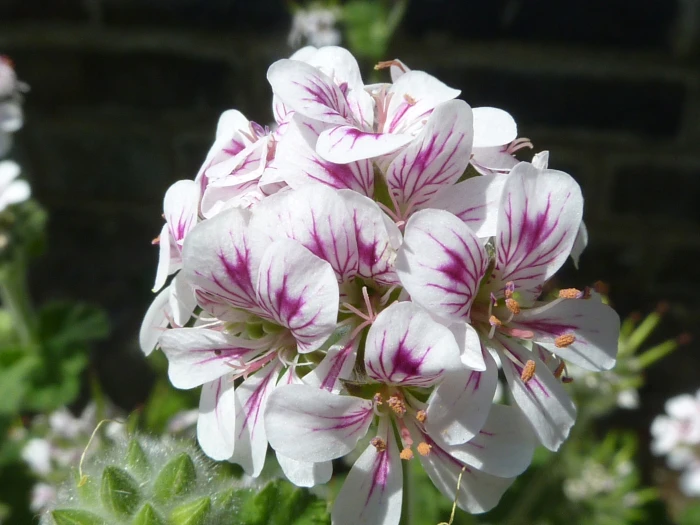Native Storksbill
(Pelargonium australe)
Native Storksbill (Pelargonium australe)
/
/

Magnus Manske
CC BY-SA 3.0
Image By:
Magnus Manske
Recorded By:
Copyright:
CC BY-SA 3.0
Copyright Notice:
Photo by: Magnus Manske | License Type: CC BY-SA 3.0 | License URL: https://creativecommons.org/licenses/by-sa/3.0 | Uploader: Magnus Manske | Publisher: Wikimedia Commons | Title: Pelargonium_australe_(Geraniaceae)_flower.JPG |































Estimated Native Range
Climate Requirements
| • Precipitation | 26" - 31" |
| • High Temp. | 69°F - 85°F |
| • Low Temp. | 33°F - 46°F |
Summary
Pelargonium australe, commonly known as native storksbill, wild geranium, or austral storksbill, is a perennial herb endemic to coastal and inland regions of southern Australia, including Tasmania. It thrives in a variety of habitats such as coastal dunes, rocky outcrops, and open woodlands. This species typically grows to 50 cm in height and features deeply lobed leaves with 5 to 7 segments. From October to March, it produces showy umbels of 4 to 12 flowers, each displaying delicate pink petals with darker markings that attract pollinators.
Pelargonium australe is valued for its drought tolerance and the charming pink flowers that bloom in the warmer months, making it a popular choice for rockeries, coastal gardens, and as a potted specimen. It is known for its adaptability to various soil conditions and is often used in xeriscaping. While it prefers full sun or part shade, it can tolerate a range of light conditions, and it requires low to medium water once established, thriving in soils with medium to fast drainage. Gardeners appreciate its ease of propagation through cuttings and its low maintenance requirements. However, it can be susceptible to root rot if overwatered or planted in poorly drained soils.CC BY-SA 4.0
Pelargonium australe is valued for its drought tolerance and the charming pink flowers that bloom in the warmer months, making it a popular choice for rockeries, coastal gardens, and as a potted specimen. It is known for its adaptability to various soil conditions and is often used in xeriscaping. While it prefers full sun or part shade, it can tolerate a range of light conditions, and it requires low to medium water once established, thriving in soils with medium to fast drainage. Gardeners appreciate its ease of propagation through cuttings and its low maintenance requirements. However, it can be susceptible to root rot if overwatered or planted in poorly drained soils.CC BY-SA 4.0
Plant Description
- Plant Type: Herb
- Height: 1.3-1.3 feet
- Width: 1-1 feet
- Growth Rate: Moderate
- Flower Color: Pink, White
- Flowering Season: Spring, Summer, Fall
- Leaf Retention: Evergreen
Growth Requirements
- Sun: Full Sun, Part Shade
- Water: Low, Medium
- Drainage: Medium, Fast
Common Uses
Bee Garden, Butterfly Garden, Deer Resistant, Edible*Disclaimer: Easyscape's listed plant edibility is for informational use. Always verify the safety and proper identification of any plant before consumption., Fragrant, Groundcover, Low Maintenance, Showy Flowers
Natural Habitat
endemic to coastal and inland regions of southern Australia, including Tasmania
Other Names
Common Names: Ivy Geranium, Austral Storksbill
Scientific Names: Pelargonium australe, Pelargonium mutabile, Pelargonium glomeratum, Pelargonium anceps, Pelargonium crinitum var. congestum, Pelargonium micranthum, Peristera columbina, Geraniospermum australe, Geranium australe
GBIF Accepted Name: Pelargonium australe (Poir.) Jacq.